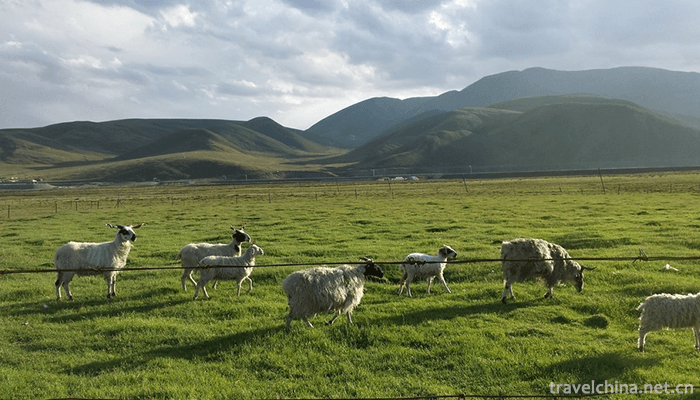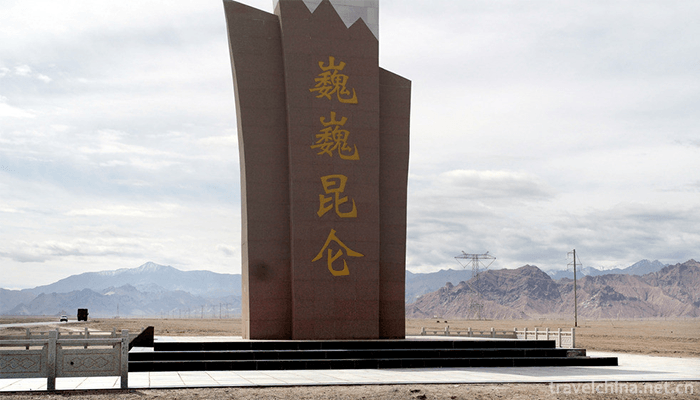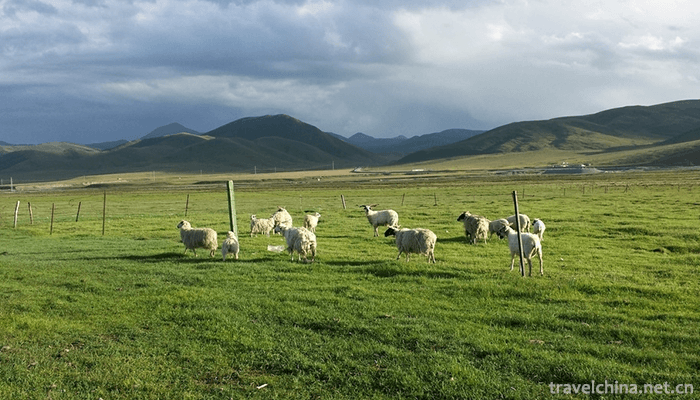Kunlun Mountains
Kunlun Mountains
Kunlun Mountain, formerly known as Kunlunqiu, also known as Kunlunxu, is the god mountain in ancient Chinese legend, the ancestor of Wanshan Mountain, the birthplace of Chinese civilization, and the king capital of Fuxi, the ancestor of humanity.
In ancient books, Kunlun Mountain is also called Kunlun Hill because of its bowl-shaped shape and Wanqiu; because it stands proudly in the mountains, like a pillar leading to the sky, it is also called Tianzhu; because it corresponds to the Big Dipper, it is also called Xuan Jiyuheng; because it is passed down as Emperor of Heaven and is rich in jade, it is also called Yujingshan.
topographic features
geographical position
Kunlun Mountain is the earliest god mountain in China, which is recorded in classical works such as Shanhai Jing and Huainanzi. Geographically, Kunlun Mountains generally refer to the Kunlun Mountains, which are located at the border between Tibet and Xinjiang.
Tianzhu, Kunlun
(Han) Anonymous Dragon Fish River Map said: "Kunlun Mountain, the pillar in the sky."
(Han) Dongfangshuo's The Book of Imagination says, "Kunlun has a copper pillar Yan, which is high into the sky, so-called Tianzhu. Around 3,000 miles, Zhou Ruchi, a member of the staff, has a house under the copper pillar and a hundred square feet in the wall.
(Han) Dongfangshuo's Records of Ten Continents in China: "Kunlun, Shangtong Xuanju (Beidou star)... Tai Shang famous mountain, tripod in the five sides, town geography is also. No. Tianzhu.
Kunlun Wan Qiu
(Han) Dongfangshuo's Records of Ten Continents in China: "Kunlun... Fang Guang Wanli, similar to Yan basin, narrow and wide.
Kunlun dragon vein
(Han) Anonymous "River Map Including Ground Elephants": "Longchi Mountain, four sides and high, the central pool, seven hundred miles, the inhabitation of dragons. Five-flowered trees (according to Five-flowered grass) are eaten by dragons. Four thousand miles to the auditorium."
(Han) Dongfangshuo's "Records of Ten Continents in Hainan": "Kunlun, equal to each other, each face five thousand miles, the upper stratum is a group of dragons gathered together", "there are many phoenixes on the continent."
Kunlunqiu is the ancestor of Chinese dragon vein and the prototype of dragon. Saint Wang Ping is the leading part of Kunlun Hill, with Yao Chi in the center, and its trunk is composed of the ridge of Mount E (sharp and high mountain) called Daluoling. Xuanyuantai is located in the Dragon Tail, where the Yellow Emperor worshipped Heaven and realized Taoism.











-
1.Jiulong Mountain Rural Tourism Scenic Area
Mianzhu Jiulongshan Rural Tourism Scenic Area is located in the northwest of Mianzhu City, Sichuan Province. It is a characteristic rural tourism area
Time 2018-12-22 -
2.Qianfoya Scenic Spot
Guangyuan Qianfoya is the largest grotto group in Sichuan Province. The statues of cliffs began in the Northern Wei Dynasty. After nearly 1500 years, the cliffs, which are 45 meters high and 200 meter
Time 2018-12-26 -
3.Guanyin Mountain National Forest Park Guangdong
Guanyinshan National Forest Park in Guangdong Province is the first National Forest Park in Dongguan City approved by the State Forestry Administration. It is located in Zhangmu Town, Dongguan City
Time 2019-01-13 -
4.Jiao Yulu Memorial Park
Jiao Yulu Memorial Park (formerly Jiao Yulu Martyrs Cemetery) was built in February 1966. It is located on the old embankment of the Yellow River in the north of Lankao County, Kaifeng City
Time 2019-01-22 -
5.Devil City
The Devil City is also known as the Wind City of Urho. Wuerhe Mining Area in the lower reaches of Jiamu River, located in the northwest margin of Junggar Basin
Time 2019-02-07 -
6.Torch Festival
Torch Festival is an ancient traditional festival of the Yi, Bai, Naxi, Jinuo and Lahu nationalities. It has profound folk cultural connotations and is known as the "carnival of the East".
Time 2019-05-05 -
7.Taiping Drum in West Beijing
Taiping Drum, a folk dance in Mentougou District of Beijing, is one of the national intangible cultural heritage.
Time 2019-05-07 -
8.Lu an drum
Luan drum is a traditional drum book and drum music form with distinct regional characteristics in the north, also known as the "old tune of Lu'an". It is named for its popularity in the are
Time 2019-05-15 -
9.Harmonic Qin
In the history of Harmonious Qin, young men and women in Nima Township, Bango County, Naqu Prefecture, Tibet had a tradition of gathering to dance Harmonious Qin. Whether it was the end of farming or
Time 2019-07-06 -
10.Forging Skill of Zhang Xiaoquans Scissors
In 1663, Zhang Xiaoquan's scissors were first created in Hangzhou, and later became one of the famous "five Hangzhou" products. The development of "Zhang Xiaoquan" scissors has exp
Time 2019-07-25 -
11.Dragon elbow mountain
Longcub mountain, also known as yuxu mountain, is located in Longquan Township, northwest of Huili County, Liangshan Yi Autonomous Prefecture, Sichuan Province, China. It is also known as yuxu mountain at the junction of Baiguowan
Time 2020-10-16 -
12.History of Guangan
Guang'an belonged to Liangzhou in ancient times and Yongzhou in Yin and Shang Dynasties. In the fifth year of King Shenliang of Zhou Dynasty (316 BC), Qin destroyed Bashu and established Ba and Shu counties. Today, Guang'an District, Qianfeng District, Linsh
Time 2020-12-19